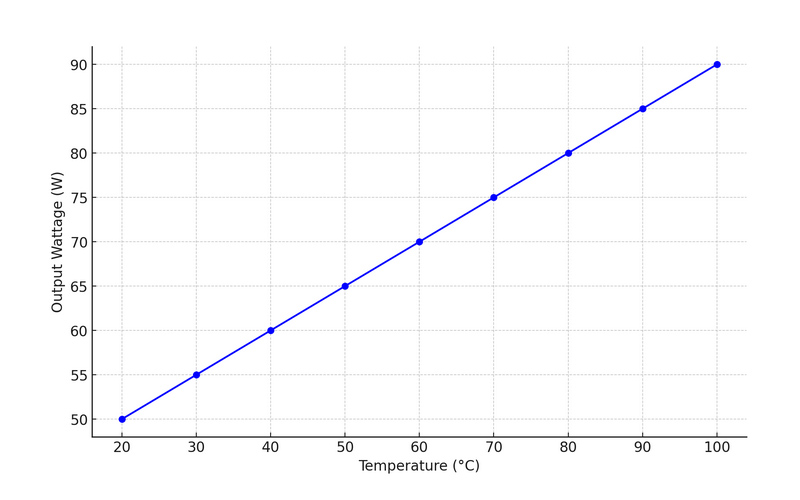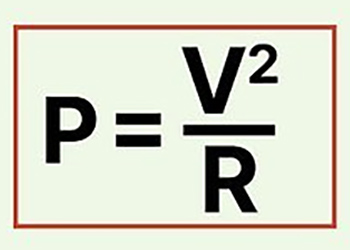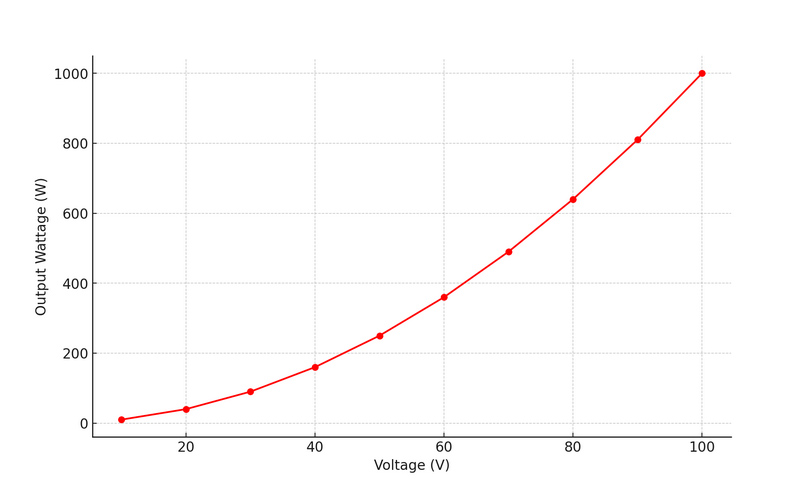Power Output
Power output is important in flexible heaters as it determines the amount of heat that the heater can generate. Flexible heaters are used in a variety of applications, such as in aerospace, medical, and instrumentation devices, and the power output of the heater needs to be carefully controlled to ensure that it provides the right level of heat without becoming too hot or potentially causing damage to the device.
The power output of a flexible heater is typically measured in watts per square inch (W/in^2) or watts per square centimeter (W/cm^2). The higher the power output, the more heat the heater can generate, but this also means that the heater will consume more electricity and may require additional safety features to prevent overheating or other hazards.
Here is some more information, Flexible Heater Design: Watt Density, Input Power, and Heater Size.
Power Output Factors
In addition to power output, other factors such as the design of the heater, the materials used, and the temperature range it can operate in are also important considerations in determining the suitability of a flexible heater for a particular application.
The power output of a flexible heater can be calculated using the following equation:
Power Output = (Voltage)^2 / Resistance
Where:
- Voltage is the voltage applied to the heater, in volts (V)
- Resistance is the electrical resistance of the heater, in ohms (Ω)
To measure the electrical resistance of the flexible heater, you can use an ohmmeter. Make sure to disconnect the heater from any power source before measuring its resistance.
Once you know the resistance of the heater, you can apply the voltage and calculate the power output using the equation above. It's important to make sure that the voltage applied to the heater does not exceed its maximum rated voltage, which should be specified by the manufacturer.
The temperature of a flexible heater depends on several factors, including the power input, the heater's thermal properties, and the ambient temperature.
The temperature of the heater can be calculated using the following equation:
Temperature (T) = (Power Input (P) / Heat Transfer Coefficient (h) x Surface Area (A)) + Ambient Temperature (Tamb)
Where:
- Power Input (P) is the electrical power input to the heater, in watts (W)
- Heat Transfer Coefficient (h) is the thermal conductivity of the heater material, in watts per square meter per Kelvin (W/m2-K)
- Surface Area (A) is the surface area of the heater, in square meters (m2)
- Ambient Temperature (Tamb) is the temperature of the surrounding environment, in Kelvin (K)
The power input can be calculated using the equation I^2 x R, where I is the current flowing through the heater and R is the resistance of the heater.
The heat transfer coefficient and surface area can be estimated based on the material and geometry of the heater. The ambient temperature is the temperature of the surrounding environment.
It's important to note that this equation provides an estimate of the temperature of the heater, and actual temperature may vary depending on other factors such as the heater's insulation and the method of heat transfer. Additionally, it's important to ensure that the temperature of the heater does not exceed the maximum operating temperature specified by the manufacturer to prevent damage to the heater or its surroundings.
Pressure Sensitive Adhesives
Understanding how Pressure Sensitive Adhesives (PSAs) in flexible heaters help to transfer heat by creating a thermal interface between the heater and the surface it is being applied to, reducing air gaps and voids that could act as thermal barriers, and providing a uniform contact area for efficient and even heat distribution.
PSAs are commonly used in flexible heaters as an adhesive layer between the heater and the surface it is being applied to, and they are preferred over other types of adhesives because they can maintain their adhesive properties even when exposed to high temperatures.
When a flexible heater with a PSA layer is applied to a surface, the adhesive layer creates a thermal interface between the heater and the surface. This allows heat to transfer from the heater to the surface more efficiently, as the adhesive layer helps to reduce any air gaps or voids that could otherwise act as a thermal barrier.
The PSA layer can also help to distribute the heat evenly across the surface, as it provides a uniform contact area between the heater and the surface. This is important for applications where precise temperature control is required, such as in medical devices or industrial processes.
Output Wattage and Temperature
Here is a table and a chart showing the relationship between output wattage and temperature for a flexible heater. As the temperature requirements of a heater increase, the output wattage also increases, indicating a positive correlation between the two variables.
Here is a hypothetical example of such data:
| Temperature (°C) |
Output Wattage (W) |
|---|---|
| 20 | 50 |
| 30 | 55 |
| 40 | 60 |
| 50 | 65 |
| 60 | 70 |
| 70 | 75 |
| 80 | 80 |
| 90 | 85 |
| 100 | 90 |
Output Wattage vs. Temperature in a Flexible Heater

To create a chart that shows the relationship between voltage and wattage output in flexible heaters, we'll use the formula for electrical power (wattage):

Where:
- P is the power (wattage) in watts (W)
- V is the voltage in volts (V)
- R is the resistance in ohms (Ω)
Assuming a constant resistance, we can generate data points for various voltages and calculate the corresponding wattage outputs. Here is a hypothetical example assuming a resistance of 10 ohms:
| Voltage (V) |
Wattage (W) |
|---|---|
| 10 | 10 |
| 20 | 45 |
| 30 | 90 |
| 40 | 160 |
| 50 | 250 |
| 60 | 360 |
| 70 | 490 |
| 80 | 640 |
| 90 | 810 |
| 100 | 1000 |
Let’s plot this data.
Output Wattage vs. Voltage in a Flexible Heater

Here is the chart showing the relationship between voltage and wattage output in a flexible heater, assuming a constant resistance of 10 ohms. The relationship is quadratic, as indicated by the formula P = V2/R.
As the voltage increases, the wattage output increases quadratically. This reflects the significant increase in power consumption with higher voltages for the same resistance.
Maximize Your Heating Efficiency with Precision Control!
Unlock the full potential of your devices with flexible heaters optimized for precise power output. Whether it's aerospace, medical, or instrumentation applications, our heaters ensure consistent warmth without risks. Plus, our pressure sensitive adhesives guarantee efficient heat transfer and even distribution.
Request a Quote Request Design Support Request More Information


